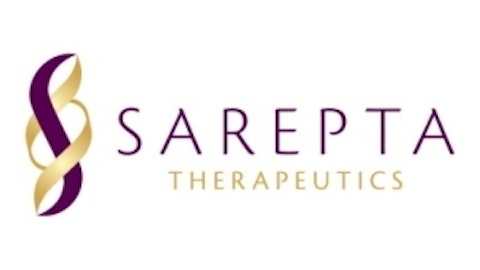For investors viewing AbbVie Inc (NYSE:ABBV) as a value play since its spin-off from Abbott Laboratories (NYSE:ABT), it is time to think again. The management has always viewed AbbVie as a long-term growth play that still has strong potential from Humira and AbbVie’s pipeline.
Since its separation from Abbott Laboratories (NYSE:ABT) on Jan. 2, AbbVie Inc (NYSE:ABBV) has been operating smoothly with a simple business model and dedicated priorities. The company is focused on Humira growth and developing its pipeline continuously. Despite the patent expiration of its lipid franchise, AbbVie Inc (NYSE:ABBV)’s management believes that the company will return to growth in 2015 and beyond.
What is AbbVie doing?
The management anticipates the increase of research and development as a percentage of sales to sustain its growth in the long-term. With the continuous growth of Humira, some margin expansion is expected. However, the overall selling, general and administrative expenses may increase first before coming down as the company continues to launch a new pipeline. The company is taking several initiatives to improve margins, including streamlining its supply chain. As the royalty burden starts to disappear, the margin will improve further.
Humira update
Xeljanz, Pfizer Inc. (NYSE:PFE)’s potential star to compete with Humira, has had a bumpy start. While earlier projections forecast peak annual sales of $3 billion, analysts are now saying that it may only hit about $1.6 billion by 2016. AbbVie Inc (NYSE:ABBV)’s management states that Xeljanz was playing out similar to its modeling. With Humira’s strong efficacy and solid safety record, there is no reason to switch a well-tolerated patient into a new therapy. The management believes Xeljanz will have a difficult time penetrating the sweet spot of the anti-TNFs.
To make things worse, Pfizer Inc. (NYSE:PFE) was stunned by Committee for Medicinal Products for Human Use (CHMP) of the European Medicines Agency’s negative opinion of Xeljanz in late April 2013. The committee stated that it “did not believe that a consistent reduction in disease activity and structural damage to joints had been sufficiently demonstrated.” There are also questions about side effects of the drug, including serious infections and malignancies that were observed in the trials. It is expected that Pfizer Inc. (NYSE:PFE) will appeal the decision by the third quarter of 2013.
Hepatitis C pipeline
Hepatitis C attacks the liver and can lead to liver cancer, affecting about 150 million people worldwide. The market for new Hepatitis C pills is estimated at $20 billion. AbbVie Inc (NYSE:ABBV) said it has a good chance to win the race against Gilead Sciences, Inc. (NASDAQ:GILD) to launch a new generation of all-oral hepatitis C drugs.
Gilead Sciences, Inc. (NASDAQ:GILD)’s all-oral hepatitis C treatments cured 95% of patients after eight weeks of the therapy, and the drugs are currently in the third of three stages of clinical trials. Once available, the treatment may be sold as a single pill taken once a day. On the other hand, AbbVie’s treatment resulted a slightly lower cure rate of 90% in a Phase II trial and requires three pills in the morning and one at night for the treatment. With faster cures and less side effects, the first drug to the market could quickly grab billions of sales. Marshall Gordon, a New York-based analyst, stated that Gilead will be first, and AbbVie will be on roughly the same timeline. The analyst also noted that AbbVie Inc (NYSE:ABBV) is not getting the same credit as Gilead Sciences, Inc. (NASDAQ:GILD), however, as the market has anticipated Gilead to dominate the market. In all actuality, the race is too close to call this early.
Bottom line
With the continuous growth and potential margin expansion from Humira, as well as the declining impacts of lipid patent expiration, AbbVie is a stable long-term growth play. Humira should continue to dominate the market as its competitor, Xeljanz, has a hard time penetrating the market. AbbVie has a limited downside protected with its solid cash flow and steady Humira growth. However, much more upside can be expected if AbbVie can launch its all-oral hepatitis C drugs first to capture the estimated $20 billion market.
Nick Chiu has no position in any stocks mentioned. The Motley Fool recommends Gilead Sciences. Nick is a member of The Motley Fool Blog Network — entries represent the personal opinion of the blogger and are not formally edited.
The article AbbVie Has Much More Upside Reward Than Downside Risk originally appeared on Fool.com is written by Nick Chiu.
Copyright © 1995 – 2013 The Motley Fool, LLC. All rights reserved. The Motley Fool has a disclosure policy.





